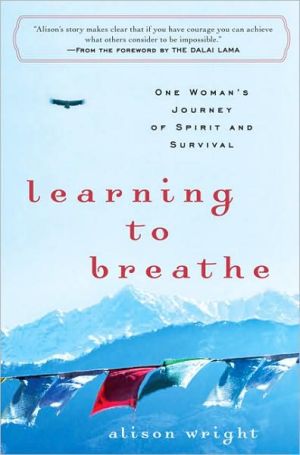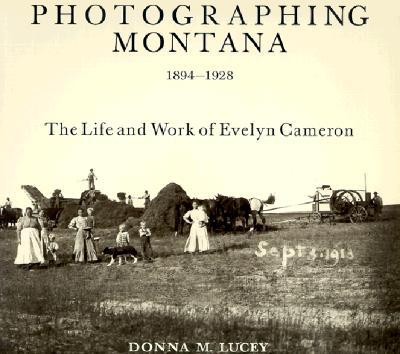Learning to Breathe: One Woman's Journey of Spirit and Survival
An extraordinary spiritual memoir about the will to survive . . . one breath at a time\ While traveling in Laos on a winding mountain road, the bus that award-winning journalist Alison Wright was riding in collided with a logging truck. As she waited fourteen hours for proper medical care-in excruciating pain, certain she was moments from death-Alison drew upon years of meditation practice and concentrated on every breath as if it would be her last.\ Despite countless surgeries and a grueling...
Search in google:
An extraordinary spiritual memoir about the will to survive . . . one breath at a timeWhile traveling in Laos on a winding mountain road, the bus that award-winning journalist Alison Wright was riding in collided with a logging truck. As she waited fourteen hours for proper medical care-in excruciating pain, certain she was moments from death-Alison drew upon years of meditation practice and concentrated on every breath as if it would be her last.Despite countless surgeries and a grueling recovery, Alison set herself the goal of achieving a new dream: to one day climb Mount Kilimanjaro-and she reached the summit on her fortieth birthday. Gasping for air once again, she stood at the highest point in Africa, determined to never again take a single breath for granted. Perfect for readers who love spiritual authors traveling abroad, such as Elizabeth Gilbert (Eat, Pray, Love) and Greg Mortenson (Three Cups of Tea), this memoir is an amazingly inspirational tale of how a life-changing accident transformed one woman's faith.Richard GereAlison Wright is a wonder. I've known her for years as an extraordinary photographer and a serious meditator, and I thought I knew her story well. I knew nothing. I didn't know what a profound writer she also is. Her life is one of a true pilgrim and a seeker of truth. It is a life of exploration, devotion, and transformation by fire. There is muscle and tears here, and the fierce flame of inspiration. She's the real deal.
Introduction\ "One step at a time, one breath at a time" is my mantra as I struggle up the snowy 18,700-foot Dolma pass, icy wind whistling around my head and searing my lungs. My stomach churns and my head aches from altitude sickness, but my spirits are buoyed by the Tibetan pilgrims who trudge with me on this sacred thirty-three-mile circumambulation of Mount Kailash, the holiest peak in Tibet.\ Despite the cold and the blinding snow, I stop at the crest of the pass to rest and have a warm drink. Pungent incense wafts through the thin air. I join my companions in adding to an array of prayer flags, which whip so hard in the wind they sound like horses' hooves drumming the ground. Each color symbolizes an element: earth, fire, water, and lung, or wind. We tie flags to lines strung up at the mountaintop, so prayers will blow to the heavens. Kneeling, I make an altar by propping up photos of Claire, Hannah, and Erin—my three young nieces—with the colorful hand-painted rocks they gave me to leave at the pinnacle of my pilgrimage.\ Both Buddhists and Hindus believe Mount Kailash to be the center of the universe. It is considered so powerful that simply visualizing loved ones here will bring them good fortune. Circling it is said to cleanse one's karma: each circumambulation inches you closer to nirvana and washes away a lifetime of sins. As I plod along, I can see pilgrims scattered along the path far ahead and far behind me, some of them creeping along one prostration at a time. It is humbling to be surrounded by such unwavering faith and devotion.\ Even as my lungs labor and my legs protest, I feel a huge wave of gratitude wash over me, a prayer of thanks that I'm alive and that I've recovered the strength to make this journey. Many Tibetans save for years and travel hundreds or even thousands of miles to perform the kora, this ritual trek around the mountain. But for me, this is more than the fulfillment of a fifteen-year dream. Every step is a celebration of the life I nearly lost and a symbol of the physical and emotional challenges I've faced in my long, arduous healing.\ I am a photographer. I have spent a lifetime immersed in other cultures, documenting the human condition in a quest to understand the world around me. Living in Asia has led me to insightful encounters with the Dalai Lama; Aung San Suu Kyi, living under house arrest in Burma (the politically correct name for the country that the military junta, her captors, have attempted to rename Myanmar); and Thich Nhat Hanh, a Vietnamese monk and teacher who for years was exiled from his country. I admire their courage and fearlessness.\ I aspired to develop their attributes of wisdom and compassion in my own heart while documenting the human dramas and devastating social conditions—the poverty, disease, and suffering—unfolding around me. I strived to find a way to balance my not-so-subtle yearning for a sense of inner peace while bearing witness to life's atrocities and injustices.\ Apparently, the universe felt I needed more than a gentle nudge. In fact, it took the impact of a one-ton logging truck to find it.
\ Richard GereAlison Wright is a wonder. I've known her for years as an extraordinary photographer and a serious meditator, and I thought I knew her story well. I knew nothing. I didn't know what a profound writer she also is. Her life is one of a true pilgrim and a seeker of truth. It is a life of exploration, devotion, and transformation by fire. There is muscle and tears here, and the fierce flame of inspiration. She's the real deal.\ \ \ \ \ Publishers WeeklyPhotojournalist Wright has gone to the ends of the earth, including some mountaintops, in a career that has documented the human wonders of the world, especially resilient children and endangered cultures. In this memoir she turns her lens on herself and her own astonishing story. The victim of a horrific bus crash in Laos in 2000, Wright should have died of her grievous injuries. She survived, and in this book retraces the steps of her journey of physical recovery, spiritual development and literal return to the scene of the crash. An Asia enthusiast, the author was led byA work and temperament to Buddhism and some of Asia's most compelling Buddhist figures, including Burmese dissident Aung San Suu Kyi and the Dalai Lama, who contributes a foreword. Wright's editors owe this tale of courage and gratitude more respect in the form of harder editing. The author's spiritual insights are fascinating and should have been teased out more. A chapter set in Australia is an interesting but irrelevant sideshow, and chronology is occasionally confusing. This inspiring story deserves a wide audience andA better editing. (Aug. 14)\ Copyright © Reed Business Information, a division of Reed Elsevier Inc. All rights reserved.\ \ \ Kirkus ReviewsGlobe-trotting photojournalist Wright (Faces of Hope: Children of a Changing World, 2003, etc.) recounts her recovery from a nearly fatal bus accident in Laos and her subsequent, extraordinary adventures. With bones crushed and lungs lacerated following a mountain-road collision, the author waited hours for help, using breathing techniques she learned from Buddhist monks to cling to life. Miraculously, she pulled through and was carted off to a hospital in Thailand, where she underwent many invasive surgeries before returning to the United States to continue her recovery. Wright paved the road with some formidable obstacles, including a trek through Arctic lands, a hike up Mount Kilimanjaro and a pilgrimage around Mount Kailash in Nepal. Any one of these activities would be challenging for someone who had never suffered severe injury, but she doggedly pushed through all of them in pursuit of physical and emotional healing. The author uses this quest as a framing device for episodes from her pre-accident life. Unfortunately, this eventful life doesn't fit into a narrative that lacks the cohesive structure to support it. Too many sloppy parallels between present and past, complete with the lessons learned from each, raise too many unanswered questions. Did Wright learn to breathe during her stay with the Tibetan monks years before her accident? Or did she (re)learn that breathing while scaling Kilimanjaro in an oxygen-deprived atmosphere two years after her accident? Or did she really (re)learn that breathing on her pilgrimage to similarly oxygen-lacking Mount Kailash? Her relatively short text leaves much unclear and fails to do justice to a larger-than-life story. Uneven writing andpacing distract from an inspirational message. Agent: Stuart Krichevsky/Stuart Krichevsky Agency\ \







